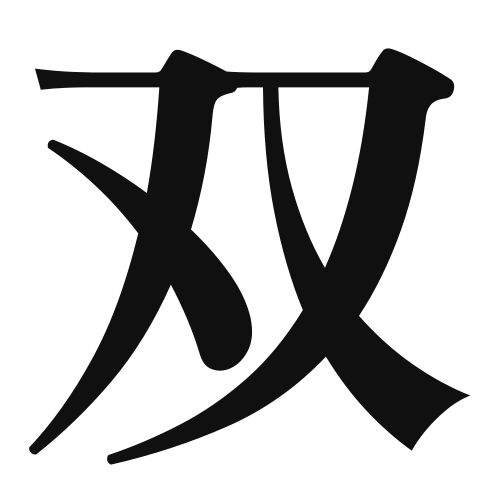1. Overview of Meaning
The kanji “双” (pronounced “sou” or “shuu”) means “pair” or “double.” It is often used to indicate two of something or to represent a concept of duality.
2. Formation and Radical
Formation of the Kanji: The kanji “双” is a compound character that combines elements to convey its meaning. It is classified as a compound ideograph (会意文字), which means it is formed by combining two or more characters to create a new meaning.
Radical: The radical for “双” is “双” itself, which emphasizes the idea of two or a pair.
3. Examples of Usage
Common Words and Phrases: Some frequently used words that include “双” are:
- 双子 (ふたご, “futago”) – twins
- 双方向 (そうほうこう, “souhoukou”) – bidirectional
Example Sentences in Daily Conversation:
- 彼は双子の兄弟がいます。 (かれはふたごのきょうだいがいます。) – He has twin brothers.
- このデータは双方向で通信できます。 (このデータはそうほうこうでつうしんできます。) – This data can communicate bidirectionally.
4. Synonyms and Antonyms
Similar Kanji: A similar kanji is “二” (に, “ni”), which also means “two.” However, “二” is more basic and does not carry the connotation of pairing or duality that “双” does.
Antonyms: An antonym for “双” could be “単” (たん, “tan”), which means “single” or “one,” representing the opposite concept of duality.
5. Cultural and Historical Background
Relation to Japanese Culture: The concept of pairs is significant in Japanese culture, often symbolizing harmony and balance. For example, the idea of “双” can be seen in traditional Japanese art and literature.
Proverbs and Idioms: One common idiom is “双璧” (そうへき, “souheki”), which refers to two outstanding individuals or things that complement each other, emphasizing the value of pairs in society.
